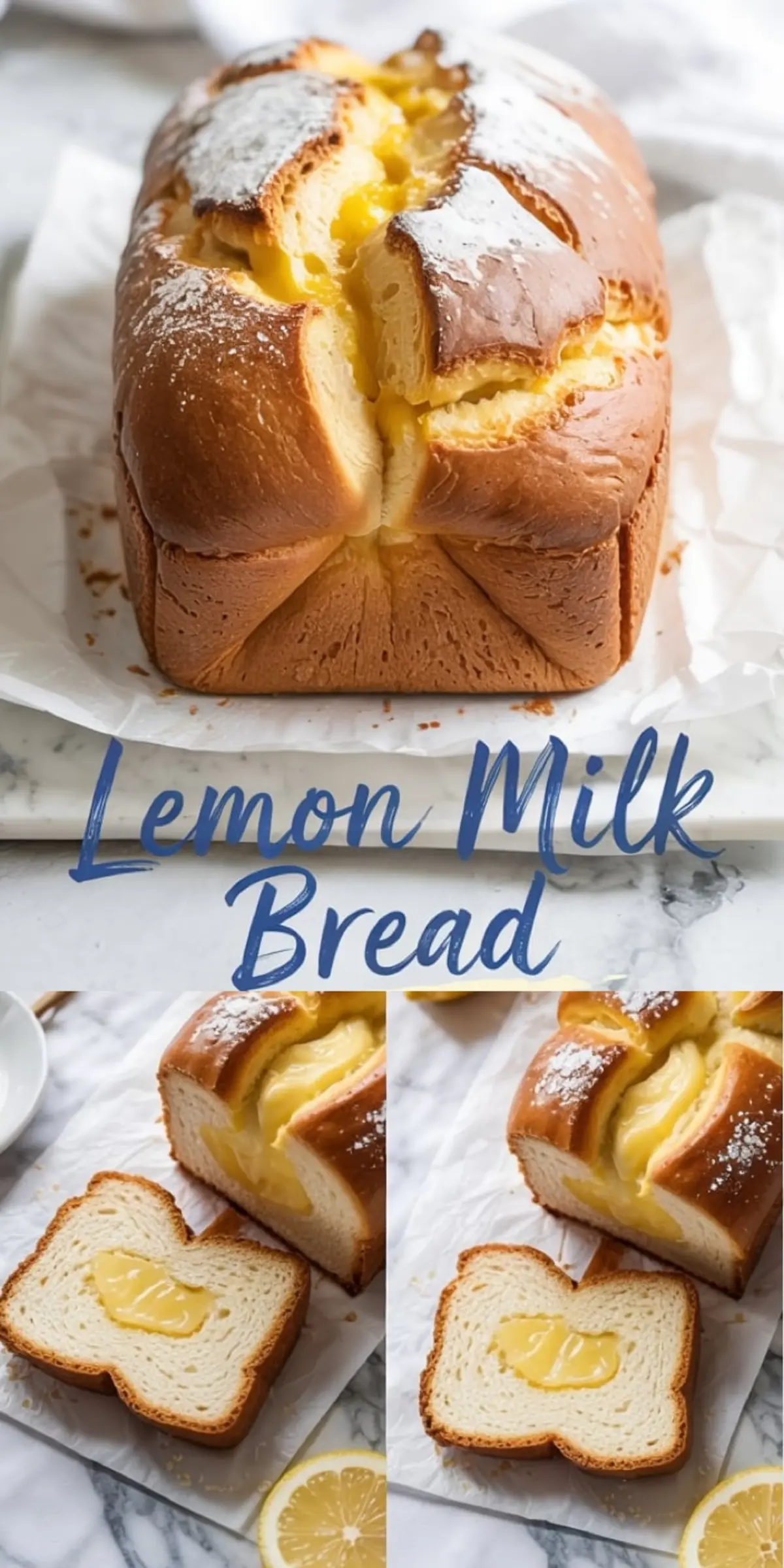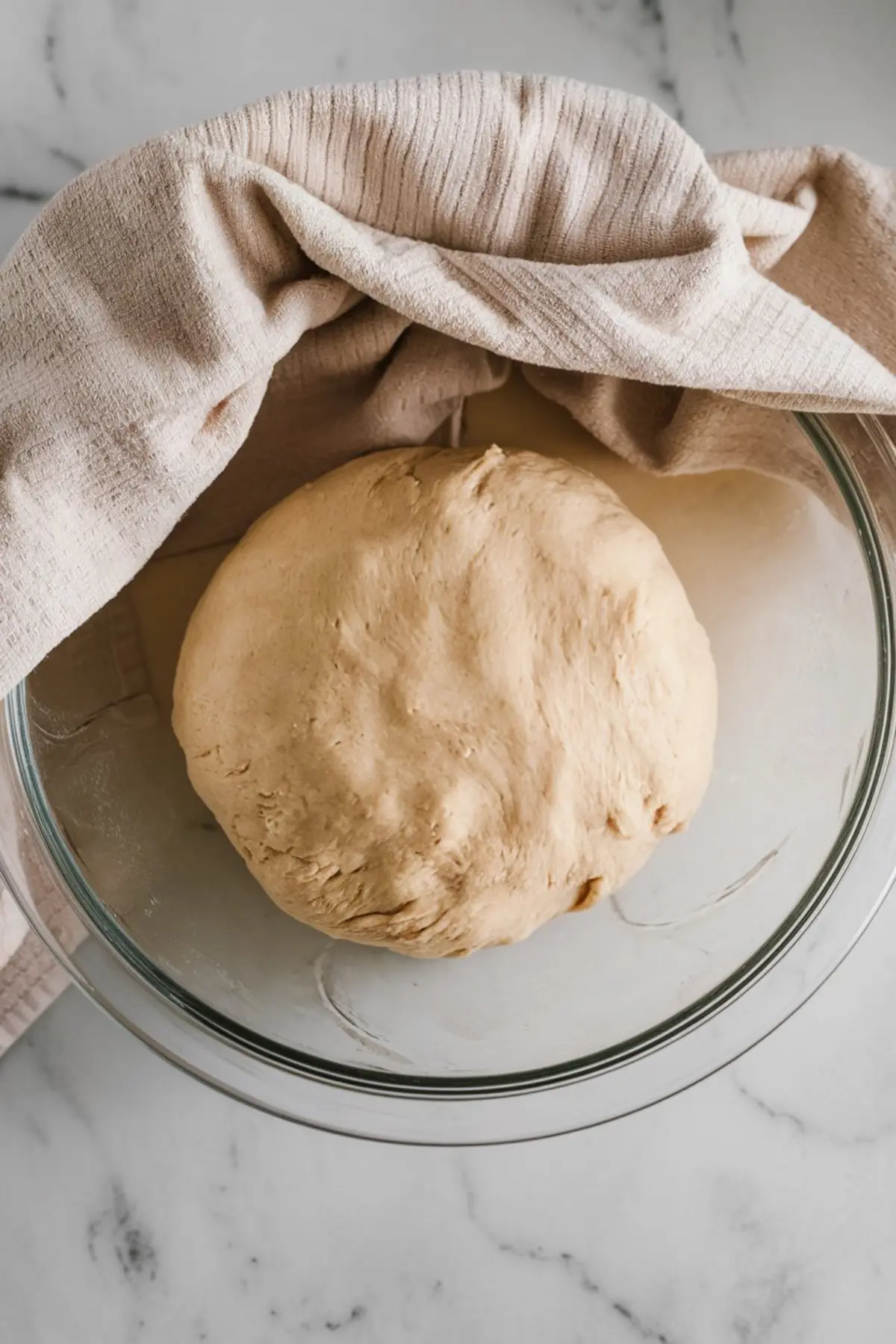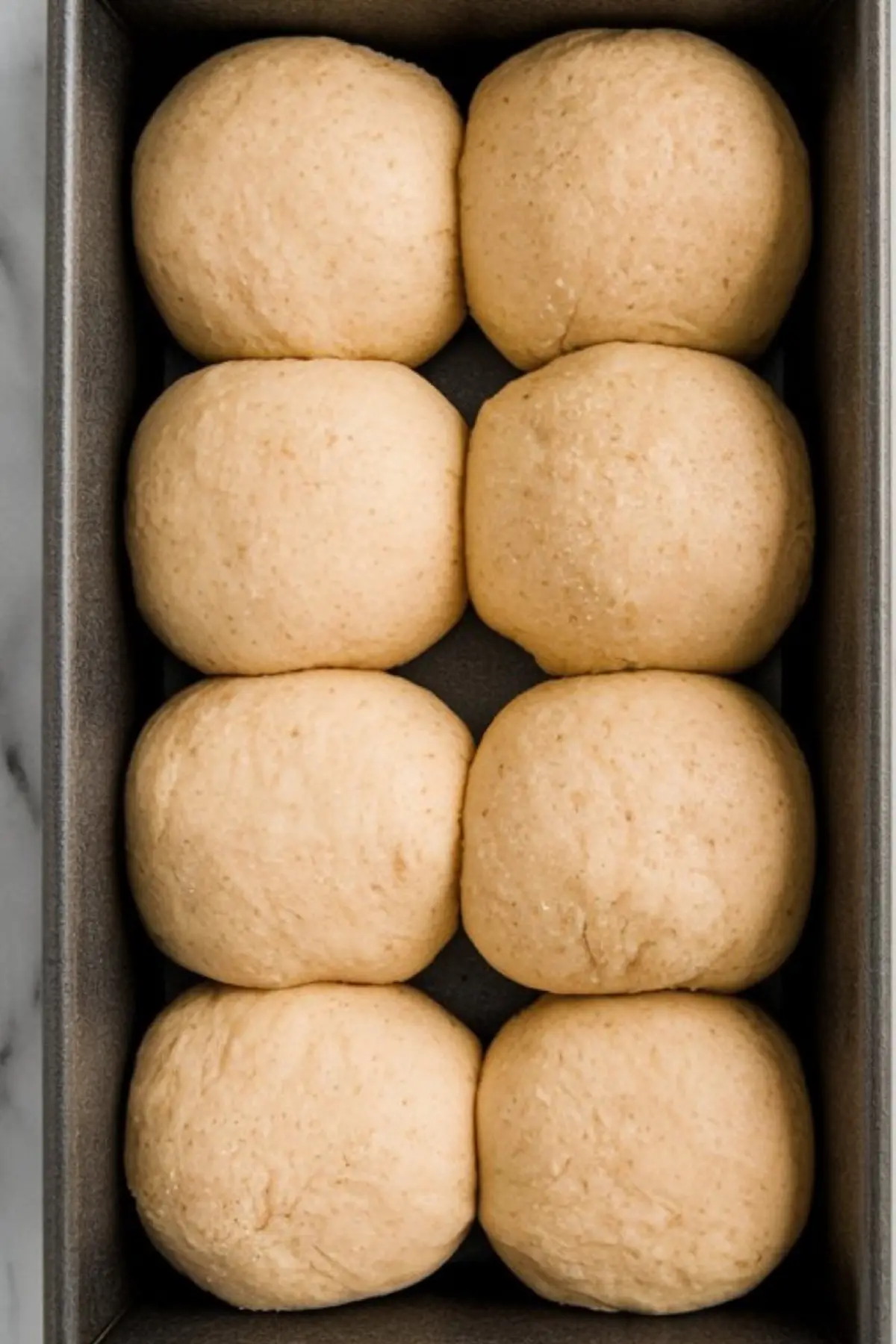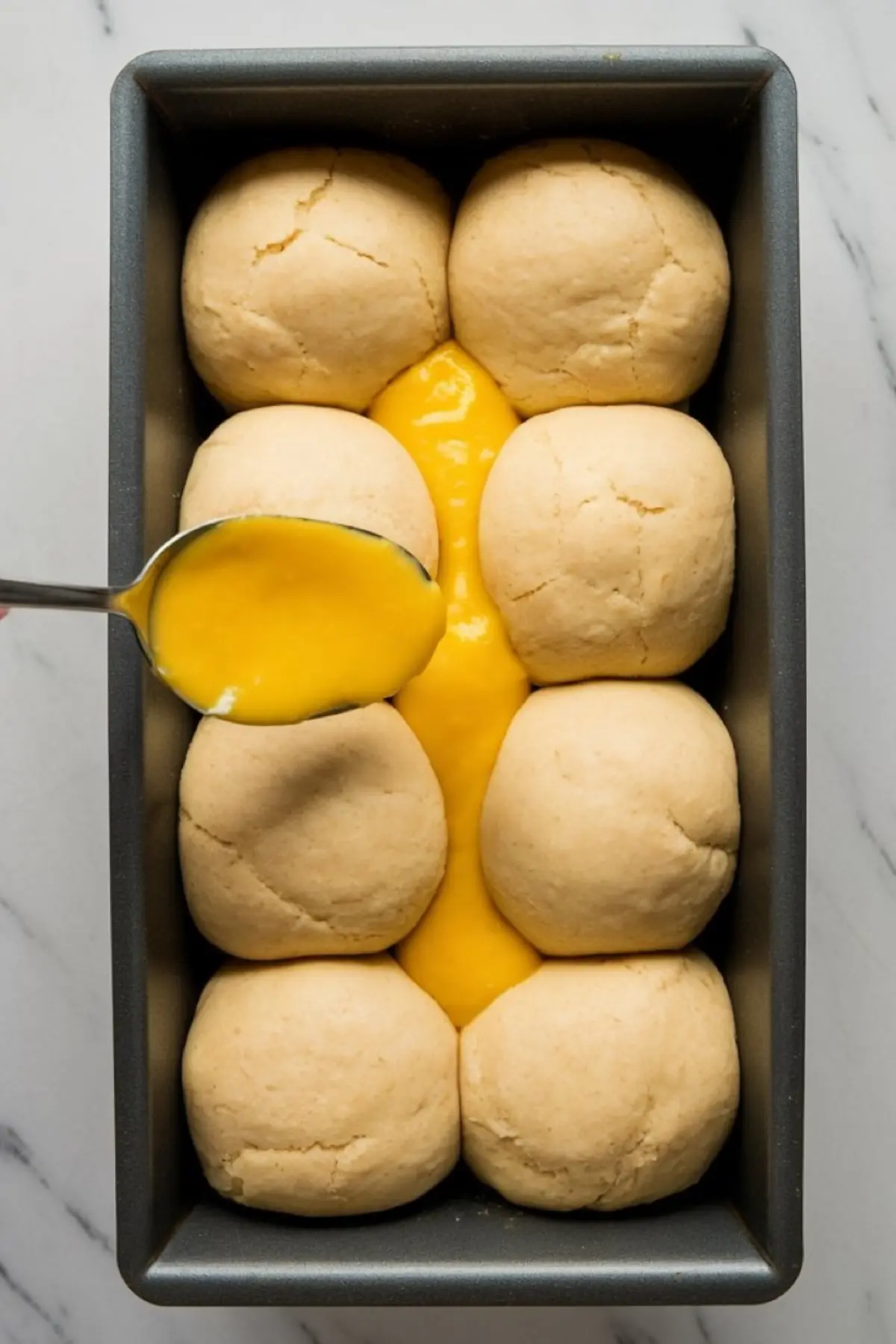If you’ve ever stood at your counter, torn between making something bright and making something soft, this is the recipe that solves both cravings. Lemon Milk Bread isn’t just soft, it pulls apart in golden threads. It smells like a bakery tucked inside a citrus grove.
You’ll learn exactly how to shape a tender loaf filled with homemade lemon curd that stays centered, doesn’t run, and gives each bite a smooth, sweet tang. I’ll walk you through my own tips for getting the dough just right, how to decide between butter and oil (I’ve tried both), and why this bread never lasts more than a day in my house.

Why This Lemon Milk Bread
You may have had lemon cakes, lemon rolls, or lemon bars, but this bread is something else. It’s quiet, subtle, and warm. It slices like a cake but eats like enriched bread. The lemon flavor doesn’t shout. It hums.
And unlike many citrus desserts that use zest only, this one builds flavor through a silky lemon curd cooked slowly until it clings to the spoon. Once baked into the loaf, it rests in the middle, neither leaking nor disappearing.
This recipe uses tangzhong: a Japanese method that mixes milk, water, and flour into a paste first. That paste locks in moisture. It makes the crumb soft for days.
How the Tangzhong Method Changes the Texture
I’ve used this method often in my sweet breads. Milk bread, cinnamon buns, chocolate twists. Tangzhong means your bread stays soft even without heaps of fat.
The paste cooks quickly. You’ll know it’s ready when a whisk leaves faint tracks in the saucepan. Cool it completely before adding it to your dough or you’ll throw off the yeast.
It’s not optional in this recipe. It’s the backbone.
Dough Ingredients: Bread Flour and Milk Are Non-Negotiable

I use bread flour here for structure. All-purpose makes the dough slump. If you want slices that hold their shape and rise high, stick to bread flour.
Warm whole milk activates the yeast and enriches the crumb. Skim milk won’t give the same softness. I’ve tested that trade and don’t recommend it.
A stand mixer helps. Ten minutes of kneading by machine brings the dough from shaggy to elastic. By hand, you’ll need at least 15 and a lot of patience.
Why Butter Wins Over Oil in This Dough
I’ve tried both. Oil made the crumb too spongy and gave a faint aftertaste. Butter adds depth. It builds richness without weighing down the dough.
Use softened unsalted butter and add it after the dough comes together. If you add it too early, it coats the flour and prevents proper gluten formation. That’s one of those steps that looks small but changes everything.
Lemon Curd: Cooked Low, Stirred Constantly
This curd doesn’t come from a jar. It’s fresh, cooked gently over steam. Whisk it over simmering water and don’t walk away. The mixture will go from loose to thick in minutes.
You want it just thick enough to hold its shape on a spoon. Too thin, and it’ll melt right into the bread during baking.
Once it cools, refrigerate it. I often make mine a day ahead so it’s ready to scoop cold.
Assembling the Loaf Without Losing That Curd Center

Divide the dough into four even pieces. Roll each into a ball. Line them up in your greased loaf pan. This gives that soft ripple effect when sliced.
To fill, press a shallow line where the dough pieces meet. Pipe or spoon the curd in generously. It will nest in that crease. As the dough rises a final time, the curd settles without spilling.
Bake until the top is golden and split where the curd peeks out. That’s your sign it’s done.

Storing and Serving: Better Slightly Warm, Keeps Well for Two Days
I like to serve this bread barely warm, no more than an hour after it cools. It slices cleanest with a serrated knife. The curd firms up just enough to stay in place.
Store leftovers in a sealed container at room temperature for up to two days. After that, the bread softens too much and starts to stale.
If I need to keep it longer, I slice and freeze it. Reheat slices in a toaster oven at low heat.
One Recipe, Many Uses: How I Serve This

I’ve served this as brunch centerpiece with whipped mascarpone. My niece eats it plain with tea. You could slice it into fingers and serve with lemon whipped cream as dessert.
The curd makes each piece sweet enough without added glaze. But if you want a bit of show, dust with powdered sugar.
This is one of those bakes where the flavor deepens by the hour. I always bake mine the night before I want to serve it.
Before You Go: Save, Bake, and Share
If you plan to try this Lemon Milk Bread, pin it now so you don’t lose it. Save it to your Lemon Recipes or Summer Baking Bread board.
Come back and leave a comment. Tell me how it worked in your kitchen, or what you’d do differently next time. I love hearing how readers make a recipe their own.
More Lemon Recipes You’ll Like:
Lemon Milk Bread

Soft, fluffy, golden loaf with a bright lemon curd center.
Ingredients
- FOR THE TANGZHONG
- 3 tablespoons bread flour
- ½ cup whole milk
- ¼ cup water
- FOR THE DOUGH
- 2¾ cups bread flour
- 2 tablespoons sugar
- 1 teaspoon salt
- 2 teaspoons instant yeast
- ½ cup warm whole milk
- 1 large egg
- 3 tablespoons unsalted butter, softened
- FOR THE LEMON CURD
- 2 large eggs
- ½ cup sugar
- ⅓ cup fresh lemon juice
- Zest of 1 lemon
- 3 tablespoons unsalted butter
- OPTIONAL TOPPING
- Powdered sugar for dusting
Instructions
- MAKE THE TANGZHONG: In a small saucepan, whisk together bread flour, whole milk, and water until smooth. Place over medium heat and whisk constantly until the mixture thickens into a paste. Remove from heat and let the tangzhong cool completely.
- MAKE THE LEMON CURD: In a heatproof bowl, whisk together eggs, sugar, lemon juice, and lemon zest. Place the bowl over a pot of simmering water without letting the bowl touch the water. Cook while stirring constantly until the mixture thickens, about 7 to 10 minutes. Remove from heat and stir in butter until smooth. Allow the curd to cool to room temperature, then refrigerate until thickened.
- PREPARE THE DOUGH: In a mixing bowl, combine bread flour, sugar, salt, and instant yeast. Add the cooled tangzhong, warm milk, and egg. Mix until a rough dough forms, then add the softened butter. Knead by stand mixer on medium speed for 10 to 12 minutes until the dough is smooth and elastic. Shape into a ball and place in a greased bowl. Cover and let rise in a warm place until doubled in size, about 1 to 1.5 hours.
- DIVIDE AND SHAPE: Once the dough has risen, gently deflate it and divide into 4 equal pieces. Shape each piece into a smooth ball. Arrange the balls side-by-side in a greased 9x5-inch loaf pan, so they fill the pan from end to end.
- FILL WITH LEMON CURD: Use your fingers or the back of a small spoon to create a shallow crease along the center where the dough balls meet. Spoon or pipe the chilled lemon curd generously into the crease, filling the gaps between the dough sections.
- FINAL RISE: Cover the loaf loosely with plastic wrap or a clean towel and allow it to rise for 30 to 45 minutes, until puffy and nearly doubled in size.
- BAKE: Preheat the oven to 350°F (175°C). Bake the loaf for 30 to 35 minutes until golden brown and the top has cracked slightly where the curd has bubbled up. Let the loaf cool in the pan for 10 minutes before transferring to a wire rack to cool completely. Dust with powdered sugar if desired before serving.
Notes
Lemon curd can be made up to 2 days in advance and stored chilled. Ensure the curd is thick enough to stay centered during baking.

